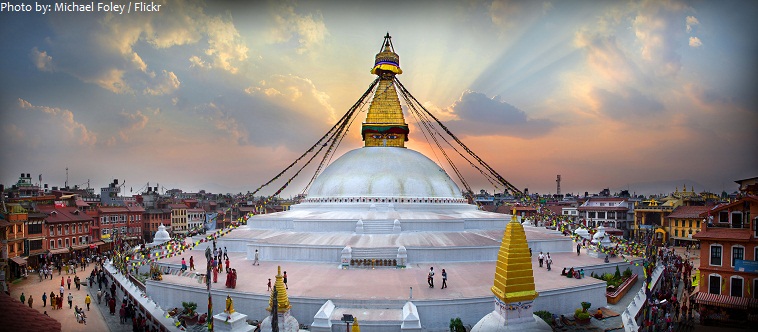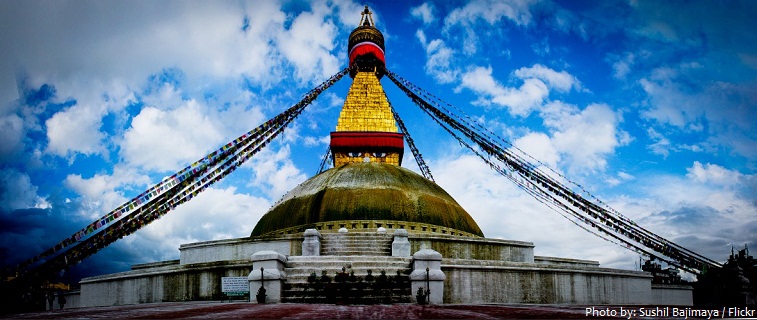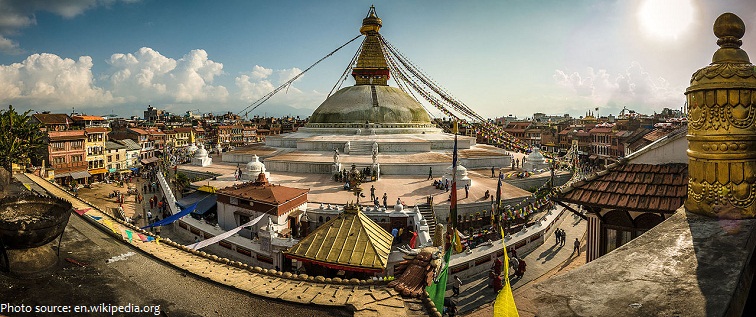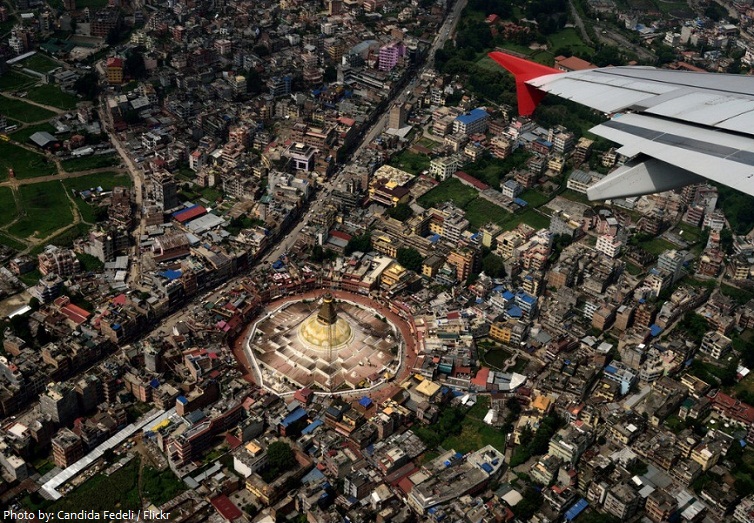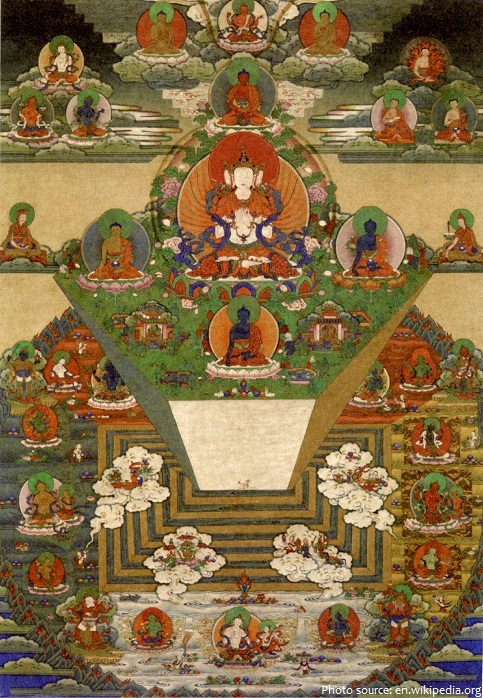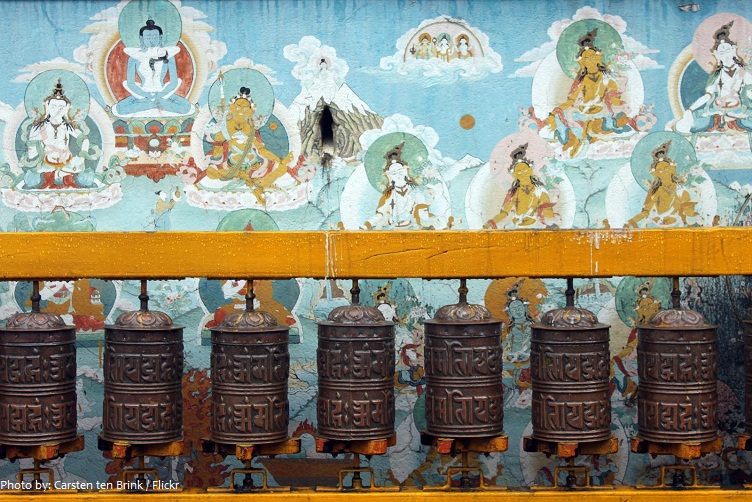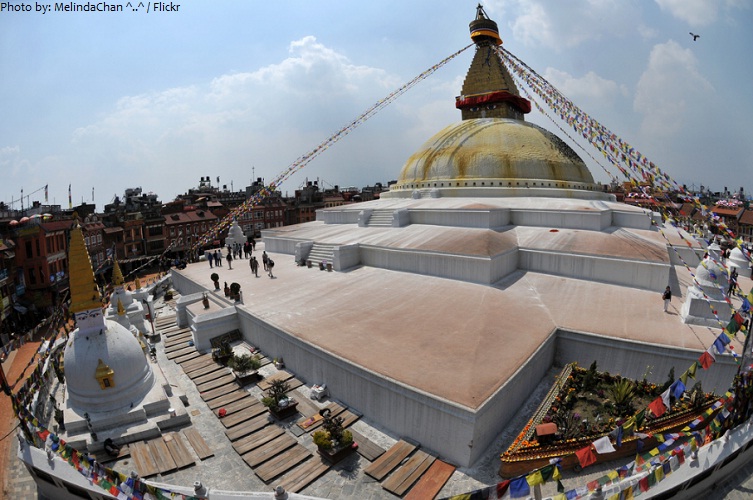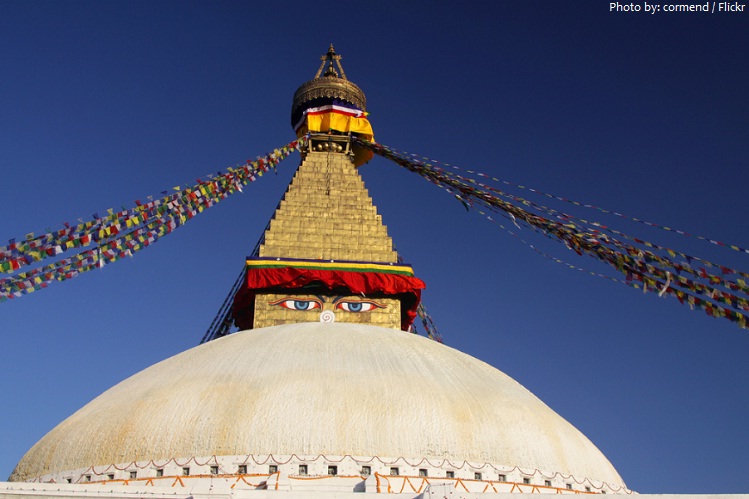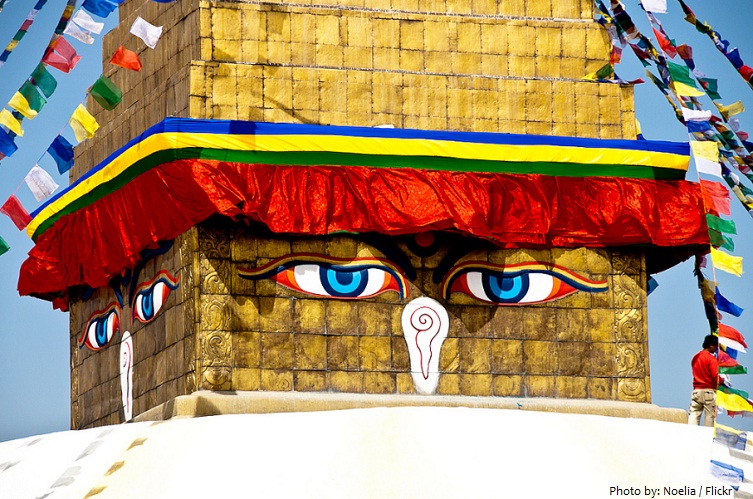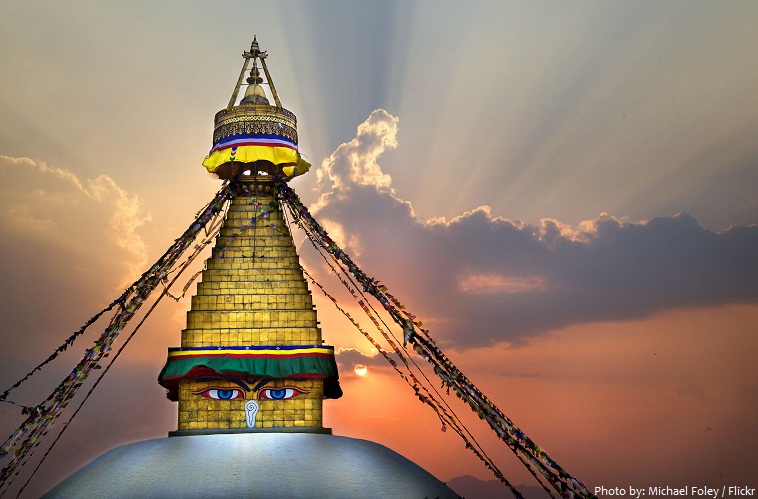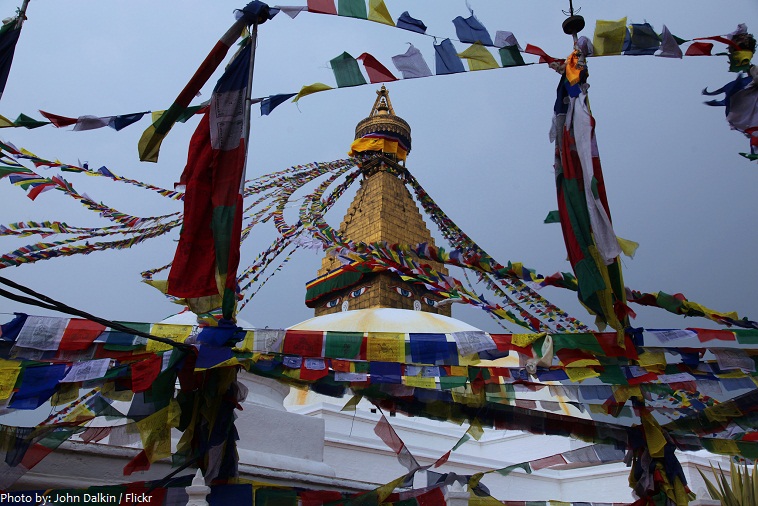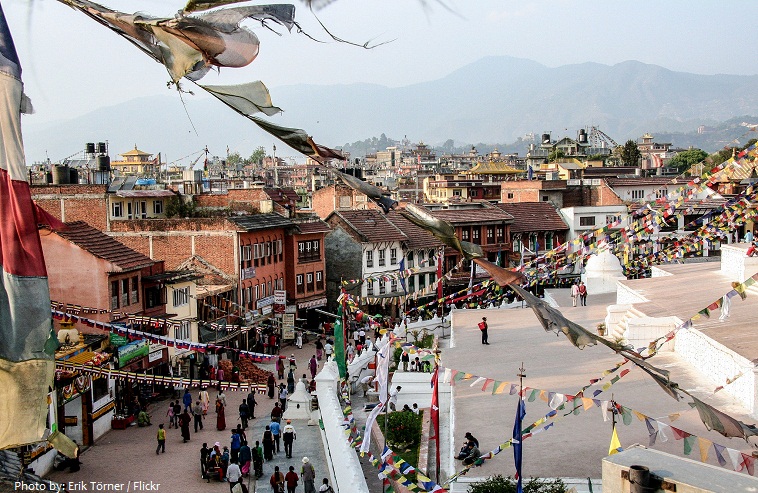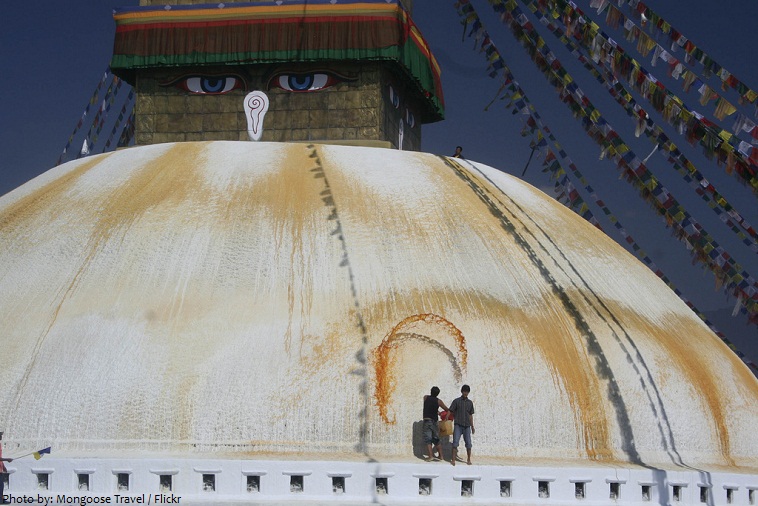Boudhanath (also called Boudha, Bouddhanath or Baudhanath or the Khāsa Caitya) is a stupa in Kathmandu, Nepal.
It is known as Khāsti in Nepal Bhasa, Jyarung Khashor in Tibetan language or as Bauddha by speakers of Nepali.
Stupas are essential to Buddhism as the cross is to Christianity, a tangible symbol of the Buddha’s enlightened mind.
It is likely that the first stupa was build some time after 600 AD, after the Tibetan King Songtsen Gampo, was converted to Budhism by his two wives. The current stupa stucture was probably build after the depredation of the Mughal invaders in the 14th century.
After the arrival of thousands of Tibetans following the 1959 Chinese invasion, the temple has become one of the most important centers of Tibetan Buddhism.
The influx of large populations of refugees from Tibet has seen the construction of over 50 Tibetan Gompas (Monasteries) around Boudhanath.
As of 1979, Boudhanath is a UNESCO World Heritage Site.
Boudhanath is the holiest Tibetan Buddhist temple outside Tibet.
With a diameter exceeding 100 metes (328 feet) and a wall-to-wall length roughly equaling a football field, Boudhanath is among the largest stupa in the world and certainly the biggest in Nepal.
The ancient Stupa 36 metres above the street and dominates the skyline.
The form and the alternated squares and circles represents a three-dimensional mandala, which is comprised of abstract religious concepts. Every portion has symbolic significance: the base, dome, square harmika, spire, and pinnacle represent the five elements.
There are other symbolic numbers here as well: the nine levels of Boudhanath Stupa represent the mythical Mt. Meru [pic. below], center of the cosmos; and the 13 rings from the base to the pinnacle symbolize the path to enlightenment, or “Bodhi” — hence the stupa’s name.
At the bottom, the stupa is surrounded by an irregular 16-sided wall. Boudhanath Stupa is closely associated with the Bodhisattva Avalokiteshvara (Padmapani), whose 108 forms are depicted in sculptures around the base. The mantra of Avalokiteshvara – Om Mani Padme Hum – is carved on the prayer wheels beside the images of Avalokiteshvara around the base of the stupa.
The base of the stupa consists of 3 large platforms, decreasing in size. These platforms symbolize Earth, and here you can look out at the mountains while listening to the chants of the devout doing kora, walking around the stupa praying.
Next come two circular plinths supporting the hemisphere of the stupa, symbolizing water.
Boudhanath is topped with a square tower bearing the omnipresent Buddha eyes on all four sides. Instead of a nose is a question-mark-type symbol that is actually the Nepali character for the number 1, symbolizing unity and the one way to reach enlightenment—through the Buddha’s teachings. Above this is the third eye, symbolizing the wisdom of the Buddha.
Thirteen tiers on the pyramid at the top of the tower symbolize the thirteen steps of initiation leading to enlightenment. The triangular shape is the abstract form for the element of fire.The gilded canopy atop the steps embodies air, and the fifth element in Buddhist philosophy is represented by the spire, “symbolic of ether and the Buddha Vairocana.”
The prayer flags tied to the stupa carry mantras and prayers into the Universe, whilst fluttering in the wind. Traditionally, prayer flags come in sets of five, one in each of five colours. The five colours represent the elements and the Five Pure Lights.
All these symbols put together as well as their reccurence make the Boudhanath Stupa a meta-symbolic construction with distinct levels of suggestion, sagacity and profoundness.
Surrounding Boudhanath are streets and narrow alleys lined with colourful homes, Tibetan Buddhist monasteries, and street vendors. Monks, worshipers and locals are circumambulate the Stupa clockwise whilst praying and chanting.
Once a year the stupa gets a makeover. Lime powder is mixed with water and carried up the stupa. Lime wash is one of the earliest and most breathable forms of decorative paint finish.
Saffron water is used for the decorative lotus petal pattern. A skilled worker is throwing the water in a bow, so when it lands on the stupa it creates a round shape.
Early in the morning: the feeding of the birds is an act of giving and compassion. It is common for Buddhist holy places to have some sort of organised feeding of birds, fish or animals.
The April 2015 Nepal earthquake badly damaged Boudhanath Stupa, severely cracking the spire. As a result, the whole structure above the dome, and the religious relics it contained, had to be removed, which was completed by the end of October 2015. The reconstruction began on 3 November 2015 with the ritual placement of a new central pole or “life tree” for the stupa at the top of the dome.
Along with Swayambhunath, it is one of the most popular tourist sites in the Kathmandu area.
